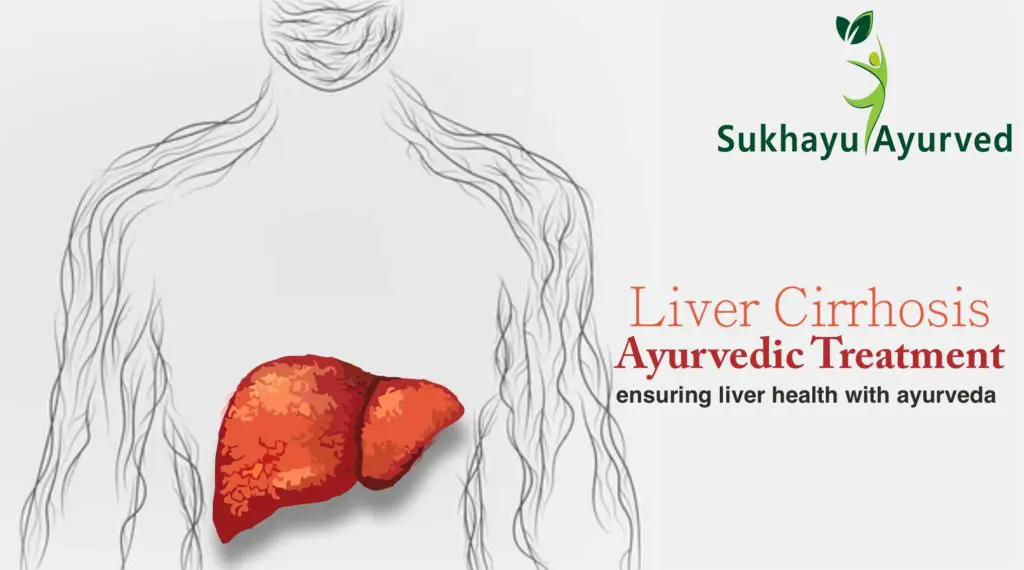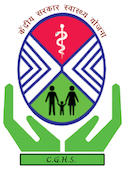Cirrhosis of the liver is a condition in which the liver becomes hardened and scarred. This can lead to liver failure and death. There is no cure for cirrhosis, but it can be treated with ayurvedic medicine. Ayurveda is a traditional system of medicine from India that uses herbal remedies, massage, and yoga to treat illness. Ayurvedic treatment for cirrhosis of the liver includes herbs that detoxify the liver, reduce inflammation, and improve liver function.

Here we will discuss liver cirrhosis before discussing the Ayurvedic treatment for liver cirrhosis.
We understand the complexity of the disease so do we understand the requirement of the treatment too. For Ayurvedic treatment for liver cirrhosis, we take care of the doshas. The Doshas govern the body, also the liver. So we need to understand the condition properly.
What is Liver Cirrhosis
Liver cirrhosis is a chronic, progressive liver disease characterized by the formation of scar tissue in the liver. It is caused by a variety of factors, including viral infections, alcohol abuse, and fatty liver disease. Symptoms of liver cirrhosis include fatigue, weight loss, jaundice, and ascites. Treatment focuses on preventing further liver damage and managing the symptoms.
Cirrhosis is a leading cause of death in the United States. In 2010, it was responsible for nearly 27,000 deaths. Liver cirrhosis is most common in adults ages 40 to 60. However, the disease can occur at any age. There are two types of liver cirrhosis: alcoholic and non-alcoholic. Alcoholic cirrhosis is caused by excessive alcohol consumption. Non-alcoholic cirrhosis is caused by a variety of factors, including viral infections, fatty liver disease, and certain medications.
Liver cirrhosis is a chronic, progressive disease. This means that it gets worse over time and can eventually lead to death. However, treatment can improve the quality of life for people with the condition and may even reverse some of the damage caused by the disease.
Facts on Liver Cirrhosis
- Liver cirrhosis happens due to chronic injury to the liver that slowly deteriorates and malfunctions.
- The damage to the liver done by cirrhosis cannot be undone.
- Liver cirrhosis, if diagnosed early, proper treatments can limit or slow the damage.
- Cirrhosis is most common in adults between 45 to 54 years of age.
- Cirrhosis affects men more in comparison to women.
- Most people who develop liver cancer suffer from cirrhosis. Cirrhosis increases the risk of liver cancer.
- Liver cirrhosis leads to liver failure. Liver failure is an end-stage liver disease where the liver is damaged badly and stops functioning.
- Trauma to the liver does not cause cirrhosis.
- In the early stages of this disease, many people may not have any symptoms.
- Ayurvedic treatment for liver cirrhosis, not only helps with the quality of life but also ensures the proper treatment of the problem in the primary condition.
Symptoms of Liver Cirrhosis
Until the liver damage is extensive, there may not be any signs or symptoms of cirrhosis.
The sign and symptoms of liver cirrhosis include:
- Loss of appetite
- Fatigue
- Easily bleeding or bruising
- Nausea
- Edema – Swelling in your
- feet or ankles and legs
- Weight loss
- Itchy skin
- Redness in the palms of the hands
- Ascites – Fluid accumulation in your abdomen
- Jaundice – Yellow discoloration in the skin, nails, and eyes
- Spiderlike blood vessels on your skin
- Absent or loss of periods in women that is not related to menopause
- Loss of sex drive
- Breast enlargement or gynecomastia and testicular atrophy in men
- Hepatic Encephalitis – The symptoms of hepatic encephalitis include confusion, drowsiness, and slurred speech
If any of the above signs and symptoms are present, see your doctor as soon as possible.
As liver function deteriorates, complications develop, which may appear as the first sign of disease in some patients.
Ayurvedic treatment for liver cirrhosis aims at subsiding all these symptoms by balancing the Doshas. All of these symptoms represent doshas.
Complications of Liver Cirrhosis
Here are the complications of liver cirrhosis. These conditions generally appear because of the lack of proper treatment for liver cirrhosis.
Bruising and bleeding –
As liver dysfunction progresses, the production of a protein needed for the blood clotting slows down or stops and results in bruising or bleeding.
Portal hypertension –
Normally, the blood from the spleen and intestine is carried through the portal vein to the liver. Due to liver cirrhosis, the normal flow of blood slows and increases the pressure in portal veins leading to portal hypertension.
Ascites and edema –
As liver damage progresses, the fluid starts collecting in the legs and abdomen. Ascites due to accumulation of fluid in the abdomen may lead to bacterial peritonitis, which is a very serious infection.
Splenomegaly –
Due to portal hypertension, the spleen enlarges and holds the white blood cells and platelets. This decreases the number of these cells in the blood.
Esophageal varices and gastropathy –
Due to portal hypertension, the blood vessels in the esophagus enlarge and lead to varices. In addition, the blood vessels in the stomach enlarge and leading to gastropathy. Enlarged blood vessels burst and lead to serious bleeding in the upper stomach and esophagus that requires emergency treatment.
Jaundice –
Liver dysfunction results in the accumulation of bilirubin in the blood and causes yellowing of Eyes, skin, and darkening of urine.
Hepatoencephalopathy –
As the liver fails to remove the toxins in the blood, the toxins eventually accumulate in the brain. The build-up of toxins in the brain termed hepato-encephalopathy decreases mental function and may lead to a coma.
Sensitive to medication –
The ability of the liver to filter the medications from the blood slows down. The medication stays longer than the expected time and builds up in the body. The patient becomes sensitive to medication and is subjected to the side effects.
Other complications of liver cirrhosis include liver cancer, insulin resistance, and type 2 diabetes. It may also lead to lung and kidney failure.
Earlier you opt for the Ayurvedic treatment for liver cirrhosis better results you can expect.
Causes of Liver Cirrhosis
Common causes of liver cirrhosis include:
Excessive consumption of alcohol – The liver purifies the toxins such as alcohol in the blood. If consumption of alcohol is too high, the liver has to overwork, and the liver cells are eventually damaged.
In comparison to healthy individuals, heavy and long-term drinkers are more likely to develop cirrhosis.
The alcohol-induced liver disease progresses in three stages. First, there is a fatty liver with the build-up of fat in the liver. In the next stage, due to alcoholic hepatitis, the liver cells swell up. About 10 to 15% of heavy drinkers develop cirrhosis.
Hepatitis –
There are different strains of hepatitis as per the viruses. Hepatitis C is a blood-borne infection that damages the liver and slowly leads to cirrhosis. Hepatitis B and D may also lead to cirrhosis.
Non-alcoholic steatohepatitis –
The accumulation of fat in the liver may also happen due to other reasons than excessive consumption of alcohol. In the early stages, there is inflammation that progresses to scarring and later on cirrhosis. It is common in people who have high levels of fat in their blood, obesity, diabetes, and high blood pressure patients.
Autoimmune hepatitis –
In some cases, the body’s immune system becomes overactive and starts attacking the healthy organs of the body in the absence of foreign substances. If the liver is attacked, the patient developed cirrhosis.
Genetic diseases –
Some inherited conditions such as Wilson’s disease or hemochromatosis may also lead to cirrhosis. In Wilson’s disease, copper accumulates in the liver and other parts of the body. Whereas hemochromatosis iron accumulates in the liver or other parts of the body.
Besides, the above, cystic fibrosis, genetic digestive disorder, alpha 1 antitrypsin deficiency, infections such as brucellosis, scarring, and hardening of bile ducts, and certain medications including isoniazid and methotrexate may also cause liver cirrhosis.
How Liver Cirrhosis Occurs
Normally the liver is able to re-generate the damaged cell. However, in the long run, frequent injury to the liver due to infection or excessive alcohol consumption leads to cirrhosis.
Every time the liver is injured, it tries to repair itself, and in this process, scar tissue develops. The scar tissue replaces the healthy and normal liver tissues. The fibrosis progress and more and more scar tissue forms. The liver is unable to function properly. It hardens, shrinks, and advanced into life-threatening advanced cirrhosis.
In the early stages, there is inflammation. Inflammation, if left untreated, leads to fibrosis. The scar tissue cannot be reversed, but progress can be slowed or prevented through proper treatment. This is why it is essential to diagnose the early stages of liver cirrhosis.
Four stages of liver cirrhosis
Stage 1 – Some scaring of the liver is present, but the symptoms are few. There are no complications.
Stage 2 – It includes the worsening of portal hypertension. There is the development of varices.
Stage 3 – It is the stage of advanced scarring. There is abdominal swelling along with serious complications and the possibility of liver failure.
Stage 4 – It is the stage where the patient develops end-stage liver disease. Without a liver transplant, this stage is fatal.
Now for a better understanding of Ayurvedic treatment for liver cirrhosis, we need to understand the concept of the liver in Ayurveda. So that we can apply the scientific understanding and can help the patients in a better way.
Ayurveda about Liver
The liver is the most important and hard-working organ in our body. It plays a very vital role in several metabolic processes and also acts as a detoxifying agent. The liver is also responsible for producing bile, which helps in the digestion of fats. Apart from these functions, the liver also stores certain vitamins and minerals like iron.
Ayurveda has a lot to say about the liver. According to Ayurveda, the liver is governed by the Pitta dosha. Pitta is one of the three doshas or energies that govern our body. It is responsible for metabolism, digestion, and other bodily processes.
An imbalance in Pitta can lead to various diseases and disorders of the liver. Therefore, it is very important to maintain a balance of Pitta in our bodies. Ayurvedic treatment for liver diseases involves the use of herbs and other natural substances that help to detoxify and rejuvenate the liver.
Liver Cirrhosis in Ayurveda
When it comes to Ayurvedic treatment for any condition, the first thing that comes to mind- “is does Ayurveda has some disease with a similar condition“? To understand- Ayurvedic treatment for liver cirrhosis, we need to understand this too.
The answer is “no”.
Ayurveda works on the principles of Doshas, so we need to understand the whole concept of the disease according to Doshas only. So we need to understand the disease, according to Doshas only.
As discussed above- the main dosha of the Liver is Pitta. Because this is Pitta which resides in the liver. The second thing is- the liver is a canalicular structure, a network of canals/channels. The Pitta keeps on moving in this and completes its duties for the body.
The main problem is- hindrance in the flow. When flow restricts because of anything, this leads to damage to the liver. The blockage comes from Kapha and this is Vata which destroys the organ along with Pitta. Because, together- Vata and Pitta are problematic.
Doshas involved in Cirrhosis of Liver
The best way to know about the Doshas is to look at the symptoms. Because these are the symptoms, which tell about the Doshas. So we will look at all the symptoms and will link these to Doshas.
Here are the symptoms:
- Loss of appetite – Low Pitta and High Kapha
- Fatigue – Aggravated Kapha Dosha
- Easily bleeding or bruising – Aggravated Pitta
- Nausea – Aggravated Kapha
- Edema – Swelling in your feet or ankles and legs – Aggravated Kapha
- Weight loss – Aggravated Vata
- Itchy skin- Aggravated Kapha and Pitta
- Redness in the palms of the hands – Aggravated Pitta
- Ascites – Fluid accumulation in your abdomen – Kapha blocking Pitta passage
- Jaundice – Yellow discoloration in the skin, nails, and eyes – Extremely aggravated Pitta
- Spiderlike blood vessels on your skin – Aggravated Pitta
- Absent or loss of periods in women that is not related to menopause – Aggravated Vata Dosha
- Loss of sex drive – Aggravated Vata Dosha
- Breast enlargement or gynecomastia and testicular atrophy in men – Aggravated Vata Dosha
- Hepatic Encephalitis – The symptoms of hepatic encephalitis include confusion, drowsiness, and slurred speech- Aggravated Vata Dosha
From the description above, one thing is clear- at the start, the main Doshas is Pitta which is strangulated with Kapha.
But near the end, it becomes more about Vata Dosha.
Ayurvedic Treatment For Liver Cirrhosis
The main thing is to save the Liver when it comes to Ayurvedic Treatment For Liver Cirrhosis.
When we go for the treatment, we go for the pacification of the Doshas. We need to target the primary dosha, according to the stage of the disease.
Because when we work for the Ayurvedic Treatment For Liver Cirrhosis, we need to focus on the whole body. The liver alone is not the target. Because these doshas are widespread and we need to focus on them all over the body.
Cirrhosis is a condition in which the liver gradually deteriorates and is unable to function properly. Ayurveda, an ancient system of medicine from India, offers a comprehensive approach to the treatment of this condition.
Ayurvedic medicine views cirrhosis as a disease caused by an imbalance of the three doshas: Vata, Pitta, and Kapha. This imbalance results in the accumulation of toxins in the liver, which leads to its deterioration.
The goal of Ayurvedic treatment is to cleanse the liver and detoxify the body, while also supporting the liver with herbs and nutrients.
There are many different herbs and nutrients that can be used in the treatment of cirrhosis. Some of the most commonly used include milk thistle, dandelion, and turmeric. These herbs help to protect the liver from further damage and promote its healing.
In addition to using these herbs, Ayurvedic medicine also recommends making lifestyle changes to support the liver. These changes include eating a healthy diet, exercising regularly, and avoiding alcohol and other toxins.
Making these lifestyle changes can be difficult, but they are essential for the treatment of cirrhosis. With the help of an experienced Ayurvedic practitioner, you can create a plan that will give you the best chance for recovery.
The approach of Ayurvedic Treatment for Liver Cirrhosis
While treating a case, the must is – clarity about the path we are going to take to treat something. When it comes to Ayurvedic Treatment for Liver Cirrhosis, the main thing is to finalize the process of the treatment. Here are the four different things we do in the treatment of liver cirrhosis in Ayurveda.
- Share the details of the patient
- Consultation
- Ayurvedic medicines for liver cirrhosis
- Panchakarma for liver cirrhosis
Details of the Liver Cirrhosis Patient
We need the proper medical history of the patient. All the blood reports like-
Blood tests: Liver function test, Lipid Profile, and Kidney function tests.
Scan Reports: Liver Fibroscan, CT scan or MRI
Please share these reports on WhatsApp or email: [email protected] so that we will assess the reports to decide how much we can assist you.
Ayurvedic Consultation for Liver Cirrhosis
When according to reports we can do the case, we will share the details for the consultation. So that we can guide you further. Because this is an online consultation therefore patient needs to be with you during the consultation.
Consultation is the second step, which will help us in finalizing the treatment of the patient.
Ayurvedic medicines for Liver Cirrhosis
There are different types of Ayurvedic medicines for liver cirrhosis. These are herbal as well as Rasa-based medicines too for liver cirrhosis.
The selection of the medicines is according to the tests and conditions of the patient.
Along with medicines, you need to strictly follow the Ayurvedic diet recommendations for the success of the treatment. So that you can get the proper results. Because these medicines will help you with diet recommendations only.
Panchakarma For Liver Cirrhosis
Only in a few cases, you might need to admit the patient to Sukhayu Ayurved for the Panchakarma for liver cirrhosis. The duration of the treatment is not fixed for these patients. Because the selection of Panchakarma procedures is according to the requirement of the patient. Therefore never ask for the exact duration of the Panchakarma. In other words, we need more clarity about the condition of the patients.
This can be decided after the consultation and complete assessment of the patient.
The outcome of Ayurvedic Treatment for Liver Cirrhosis
Normal life without any complications.
You can live a very normal life after Ayurvedic treatment for liver cirrhosis. Because we don’t target the symptoms alone, we target the “regeneration” of the liver cells.
Every patient wants to know one thing- Can Ayurvedic treatment regenerate the liver? Because most of the time you might have heard that – liver tissue can not be regenerated. But this is not true at all.
Research has proven that liver cells can be regenerated properly through Ayurvedic treatment for Liver Cirrhosis. You can lead a normal life and a better quality of life after the completion of the treatment for cirrhosis of the liver.
This is possible with proper and a well scientific treatment plan. Not alone by using some medicines with the name “liver or liv” in these.
For the treatment details, you can consult our Vaidyas through online consultation.
If you book an online consultation, our team will share the details about the consultation and required reports.
After that your video consultation will take place and you will be told about the treatment modalities.













